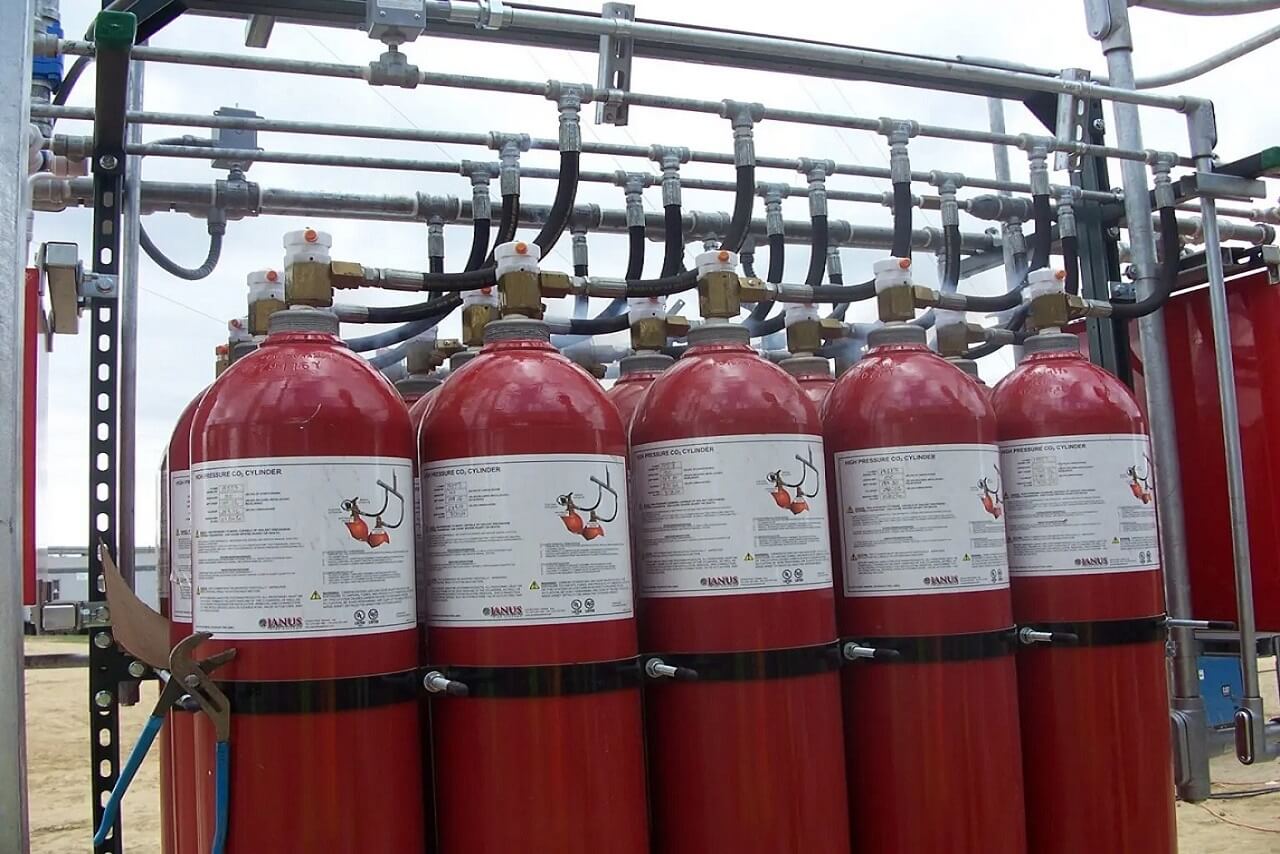- +91-98115 50274
- +91-93121 75186 | 83688 90384
- debasishfireprotectionsystems@yahoo.co.in
- pkghoshdfps@gmail.com
Carbon Die Oxide
- Home |
- Carbon Die Oxide

Carbon Dioxide Fire Protection Systems
An Overview
Carbon dioxide (CO₂) fire protection systems are specialized fire suppression systems that utilize carbon dioxide gas to extinguish fires. These systems are particularly effective in enclosed spaces where traditional water-based extinguishing methods may be ineffective or damaging to sensitive equipment.
Key Features
- Mechanism of Action:
- Oxygen Displacement: CO₂ works by displacing oxygen in the environment, reducing the oxygen concentration to below the level required for combustion, effectively suffocating the fire.
- Cooling Effect: CO₂ can also cool the flames as it expands when released, further aiding in fire suppression.
- System Components:
- Storage Cylinders: High-pressure cylinders store CO₂ in liquid form.
- Distribution Network: Piping and nozzles distribute CO₂ to the protected area.
- Control Panel: Automated systems can be activated manually or automatically in response to fire detection.
Applications
- Data Centers: Protecting sensitive electronic equipment from water damage during a fire.
- Industrial Facilities: Safeguarding flammable liquids and gases where traditional extinguishing methods could exacerbate the situation.
- Marine Applications: Used on ships and offshore platforms where water-based systems may not be practical.
Benefits
- Effective Fire Suppression: CO₂ systems are highly effective in extinguishing Class B (flammable liquids) and Class C (electrical) fires.
- Minimal Residue: Unlike foam or water, CO₂ leaves no residue, making it ideal for protecting equipment and sensitive materials.
- Fast Activation: CO₂ systems can be designed for quick activation, providing rapid response to fire incidents.
Challenges
- Safety Concerns: CO₂ is a colorless, odorless gas, and high concentrations can pose a suffocation risk to occupants. Proper safety measures and alarms are essential.
- Limited Use in Occupied Spaces: Due to the risk of asphyxiation, CO₂ systems are typically not recommended for use in occupied areas without proper evacuation procedures.
Conclusion
Carbon dioxide fire protection systems offer a reliable and effective means of suppressing fires, especially in environments where traditional methods may be unsuitable. Their ability to minimize damage and residue makes them a valuable asset in fire safety strategies. If you have any questions or need further information about CO₂ fire protection systems, feel free to ask!










